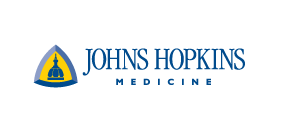|

Associate Director, Translational PKPD Modeling
October 2019 – Present | Spring House, Pennsylvania
|
- Develop robust human dose projection strategies via quantitative pharmacology to enable efficient compound discovery and translation from early preclinical discovery through early development
- PKPD modeling lead on 13 small molecule, 3 targeted protein degrader, and 1 peptide programs and counting. Due diligence modeling lead on more than 8 reviews of possible external assets
Select Key Impacts:
- Declared 3 new molecular entities (NMEs) with 2 first in human (FIH) starts that are ongoing in the clinic
- Enabled confident no-go decision on multiple programs allowing valuable resources and time to be reallocated to projects with a higher probability of success
- Informed go decision on a high priority program by establishing pivotal structure-activity relationships (SAR) for compounds to balance the exposure necessary for efficacy with the potential for on-target toxicity
|

PhysioPD Engineer, QSP Modeling
January 2016 – September 2019 | Remote
|
- Built Quantitative Systems Pharmacology (QSP) models to enable decision making across all stages of the drug discovery and development pipeline
- Lead QSP modeler on 10+ projects including small molecule platforms, large molecule platforms, & target ID/biomarker assessment focused platforms
Select Key Impacts:
- Facilitated rigorous in vitro-in vivo extrapolation, boosting confidence in the translation of preclinical data to clinical applications
- Helped clients identify the optimal biomarker for clinical use to demonstrate successful target engagement building confidence in understanding clinical outcomes and reducing risk in the clinic
- Evaluated and ranked uncertainties and data gaps in clients’ programs, allowing them to design studies that enhance the likelihood of success or facilitate quicker no-go decisions
|

Postdoctoral Research Fellow
September 2014 – February 2016 | Baltimore, Maryland
Popel Systems Biology Lab
Advisor: Dr. Aleksander Popel
|
- Triple Negative Breast Cancer Metastasis. Worked on Constructing a multi-scale PKPD compartmental model to investigate breast cancer metastasis in the lung. The model end goal was to be used to examine drug repurposing to inhibit metastasis.
- Immuno-oncology/Cancer Immunology. Explored using the adaptive immune response to target various forms of cancer. Worked on building a T-Cell signaling QSP model.
|

Graduate Research Assistant
August 2013 – May 2014 | Los Alamos, New Mexico
Center for Nonlinear Studies
Mentor: Dr. William Hlavacek
|
- A month long collaboration with the Center for Nonlinear Studies (CNLS) extended to a graduate research position. Worked on building and training rules-based models to be used for predicting cell signaling outcomes.
|

Doctoral Candidate
August 2010 – July 2014 | Albuquerque, New Mexico
Department of Chemical and Nuclear Engineering
Advisor: Dr. Jeremy Edwards
|
| My dissertation is available for download, here. The main focus of my dissertation was on the ErbB family of receptor tyrosine kinases (RTK). My work included developing mathematical modeling tools, as well as implementing those tools to make predictions about the ErbB family dynamics and kinetics. I believe by using a cycle of experimentation and predictive modeling the efficiency of research and development can be increased exponentially.
Toolbox:
- Developed a spatial stochastic model which utilizes Single Particle Tracking (SPT) data to investigate the dynamics and kinetics of proteins on and near the cell membrane.
- Validated using SPT data.
- Predicts protein behavior and interactions beyond current experimental capabilities.
- Novel experimental methods can then be developed based on predictions made by the model.
- Created a graphical user interface (GUI) for the model to allow both modelers and experimentalist to utilize the program.
- Developed an algorithm to estimate the size distribution of domains on the cellular membrane.
Spatial Stochastic Model Applications:
- Investigated the impact of membrane landscape on ErbB1 diffusion, dimerization, and phosphorylation.
- Uncovering the mechanism of lateral signal propagation through simulated experiments.
- Discovering the complex dynamics of ErbB2-ErbB3 and ErbB3-ErbB3 interactions and their impact on signal initiation.
|

Computer Simulations Engineer
March 2010 – August 2010 | Newark, Delaware
Department of Chemical Engineering
Mentor: Dr. Stanley Sandler
|
|
|

Undergraduate Research Fellow
March 2008 – August 2010 | Newark, Delaware
Department of Chemical Engineering
Advisor: Dr. Babatunde Ogunnaike
|
|
|

Mathematical Model Developer
January 2009 – January 2010 | San Carlos, California
Mentor: Dr. Rebecca Baillie
|
- Researched wound healing, helped to prepare a grant, and started developing a mathematical model for wound healing.
|

Surfactant Development Assistant
August 2007 – December 2007 | Newark, Delaware
Mentor: Errico De Francesco
|
- Researched different methods of enhanced oil recovery (EOR), different surfactants for EOR and documented and presented findings.
- Developed a model for in-situ combustion reactions and documented the developed model and how it is used.
|







